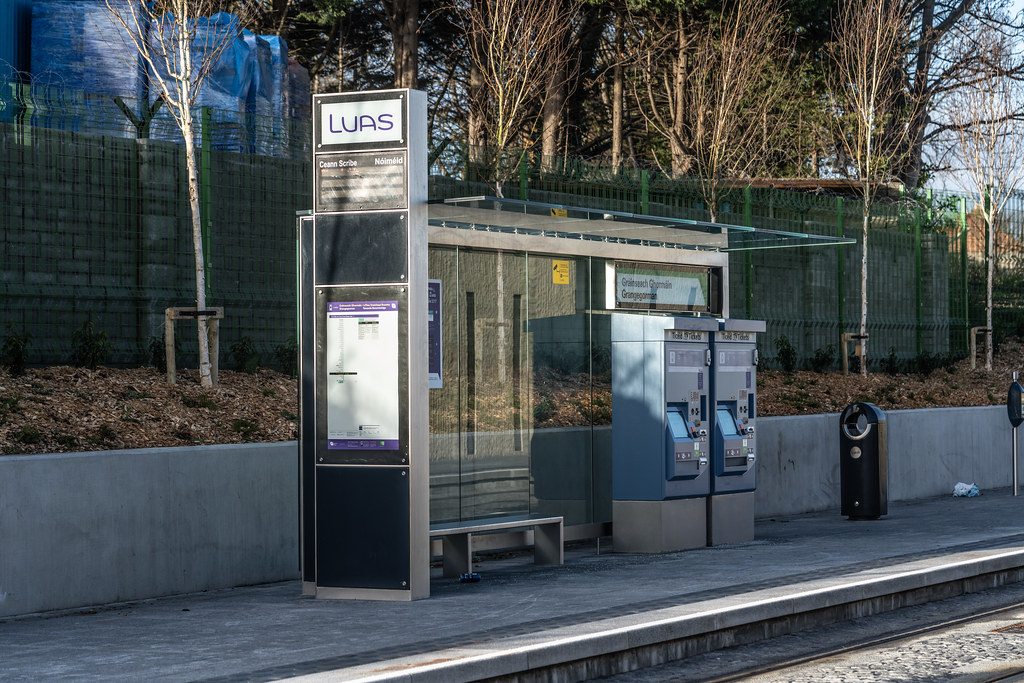GRANGEGORMAN MILITARY CEMETERY
Within weeks I will have more than 100,000 photographs available on Flickr and it has been suggested to me that there cannot be anything remaining in Dublin for me to photograph but anyone who believes that does not realise just much there is to see and do in Dublin. For example last week I read in the Irish Times that 1,000 students were starting at the new DIT in Grangegorman and when I followed up on this bit of information I discovered that there is a graveyard known as the Grangegorman Military Cemetery and even though it is located very close to where I live I never heard of it before.
Today [09/09/2014] I decided to visit the cemetery and walked over to Manor Street to get the number 37 bus to Blackhorse Avenue. When I arrived at the bus stop I was a bit disappointed to discover that I would have to wait for about twenty minutes for a bus to arrive but then a local from the area [a retired gas fitter returned after about 40 years] stop and asked me if I was interested in learning about the area and when I said yes he provided some really useful information which I will follow up on over the next few weeks. I should mention that if you are a tourist you really do need to take information supplied by Dublin locals with a ‘pinch of salt” as much of it can be totally untrue.
Visitors to Grangegorman Military Cemetery are advised that the gates are normally unlocked but if not, please contact:- OPW (Office of Public Works), Whitefields, Phoenix Park, Dublin 8 Tel: 00 353 (0)1 821 3021 or the Caretaker, Martin Rogers Tel: 00 353 (0)86 7373979.
The cemetery was opened in 1876 and was used for the burial of British service personnel and their near relatives. It contains war graves from both world wars. Some of the graves were re-located to this site at a later date (nine from King George V Hospital grounds, two from Trinity College grounds, three from Portobello (Barracks) Cemetery, two from Drogheda (Little Calvary) Cemetery and one from Oranmore Old Graveyard).
The "Leinster" graves are in several trenches in the different denominational plots.
A Screen Wall Memorial of a simple design standing nearly two metres high and fifteen metres long has been built of Irish limestone to commemorate the names of those war casualties whose graves lie elsewhere in Ireland and can no longer be maintained. Arranged before this memorial are the headstones of the war dead buried in Cork Military Cemetery but now commemorated here.
There are now 613 Commonwealth burials of the 1914-1918 war, 2 of which are unidentified, and 12 of the 1939-1945 war, 1 of which is unidentified, commemorated here.
I should take this opportunity to thank Martin who was more than helpful during my brief visit.
Today [09/09/2014] I decided to visit the cemetery and walked over to Manor Street to get the number 37 bus to Blackhorse Avenue. When I arrived at the bus stop I was a bit disappointed to discover that I would have to wait for about twenty minutes for a bus to arrive but then a local from the area [a retired gas fitter returned after about 40 years] stop and asked me if I was interested in learning about the area and when I said yes he provided some really useful information which I will follow up on over the next few weeks. I should mention that if you are a tourist you really do need to take information supplied by Dublin locals with a ‘pinch of salt” as much of it can be totally untrue.
Visitors to Grangegorman Military Cemetery are advised that the gates are normally unlocked but if not, please contact:- OPW (Office of Public Works), Whitefields, Phoenix Park, Dublin 8 Tel: 00 353 (0)1 821 3021 or the Caretaker, Martin Rogers Tel: 00 353 (0)86 7373979.
The cemetery was opened in 1876 and was used for the burial of British service personnel and their near relatives. It contains war graves from both world wars. Some of the graves were re-located to this site at a later date (nine from King George V Hospital grounds, two from Trinity College grounds, three from Portobello (Barracks) Cemetery, two from Drogheda (Little Calvary) Cemetery and one from Oranmore Old Graveyard).
The "Leinster" graves are in several trenches in the different denominational plots.
A Screen Wall Memorial of a simple design standing nearly two metres high and fifteen metres long has been built of Irish limestone to commemorate the names of those war casualties whose graves lie elsewhere in Ireland and can no longer be maintained. Arranged before this memorial are the headstones of the war dead buried in Cork Military Cemetery but now commemorated here.
There are now 613 Commonwealth burials of the 1914-1918 war, 2 of which are unidentified, and 12 of the 1939-1945 war, 1 of which is unidentified, commemorated here.
I should take this opportunity to thank Martin who was more than helpful during my brief visit.
You will find links to buy products from Amazon, Google and other partners. If you click on these links, you’ll find that the URL includes a small extra piece of text which identifies that the click came from my websites. This text is an affiliate code, and it means that I get a small percentage of the money you spend if you choose to buy that product, or, in some cases, other products from the site soon after. These affiliate links help pay the costs of producing my websites and ensure that the content is free to you.
COPYRIGHT INFORMATION BELOW APPLIES ONLY TO PHOTOGRAPHS

This work by William Murphy aka Infomatique is licensed under a Creative Commons Attribution-NonCommercial-ShareAlike 4.0 International License.
Permissions beyond the scope of this license may be available at https://excellentstreetimages.com/in-the-year-twentytwenty/copyright/.




